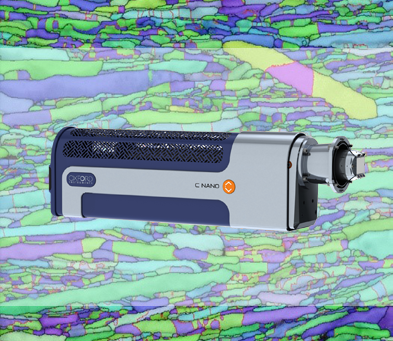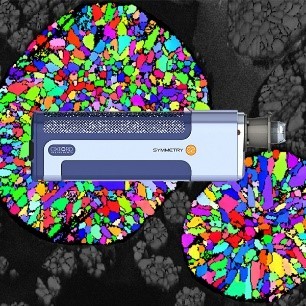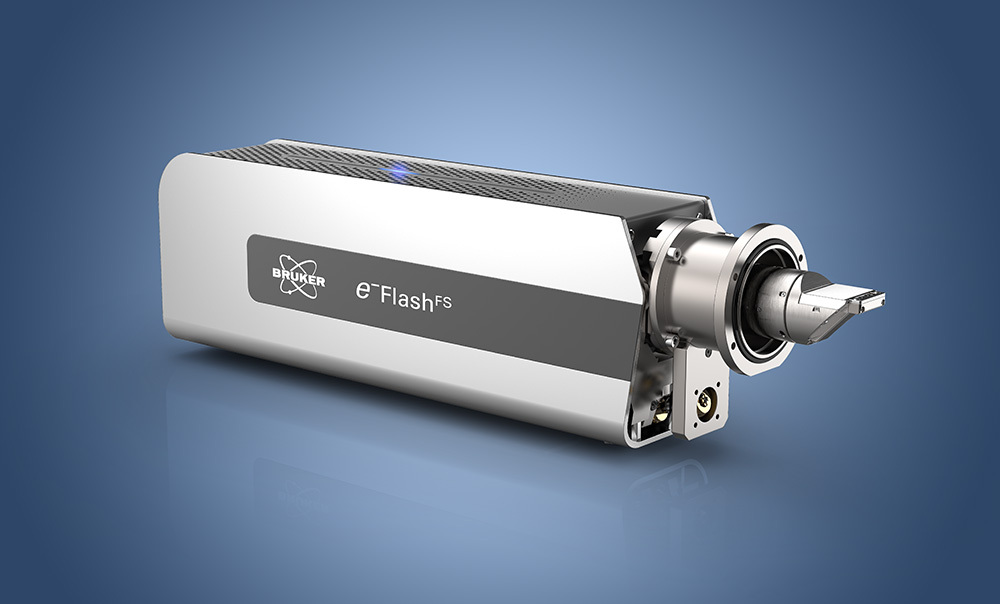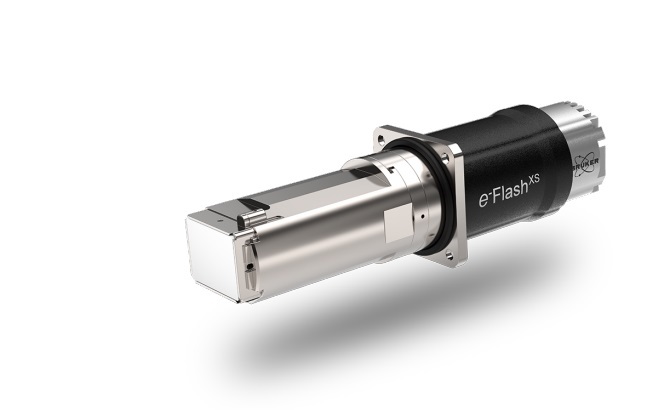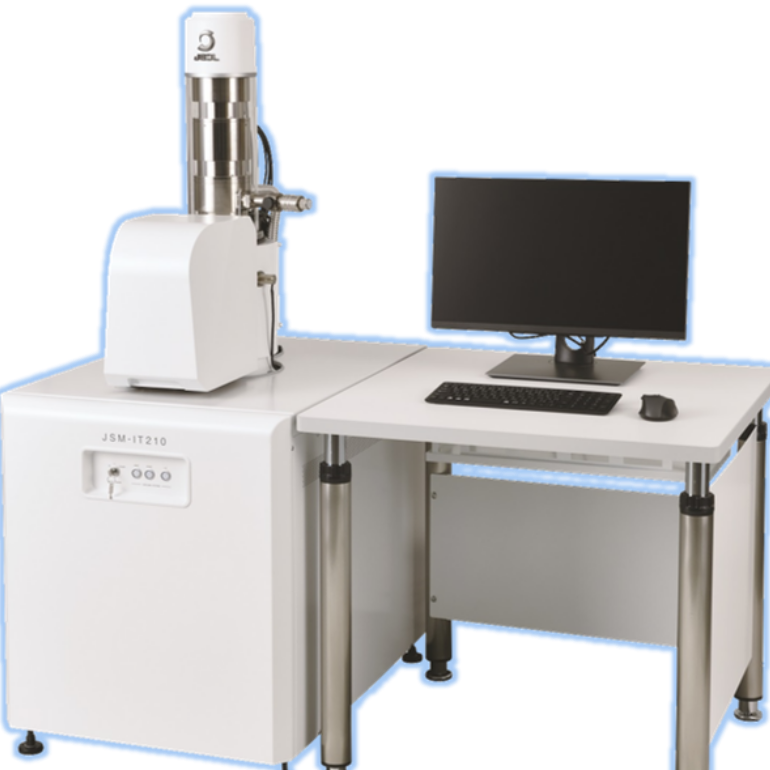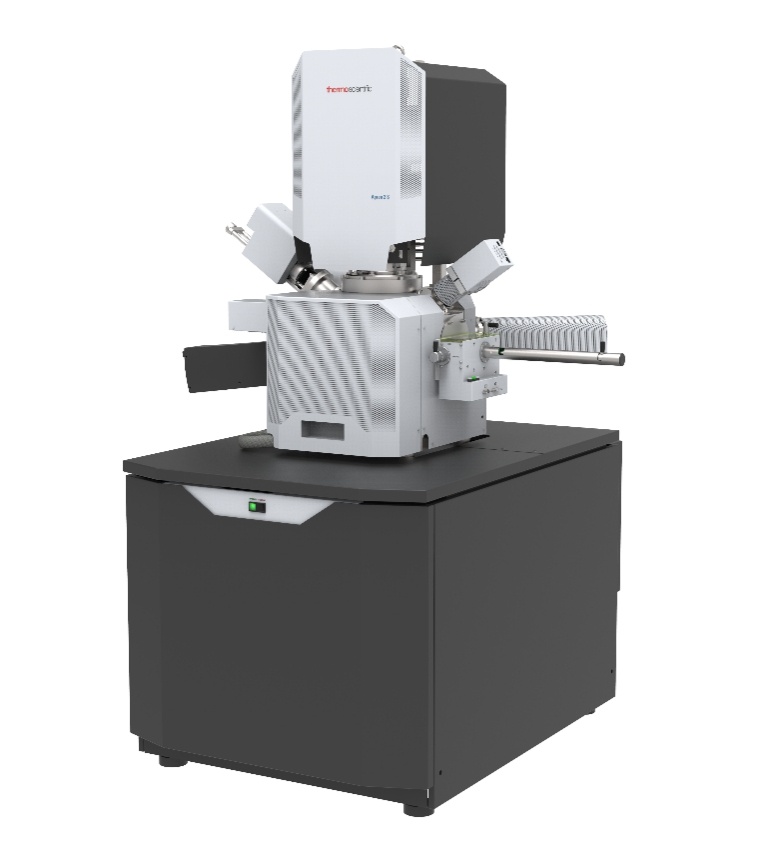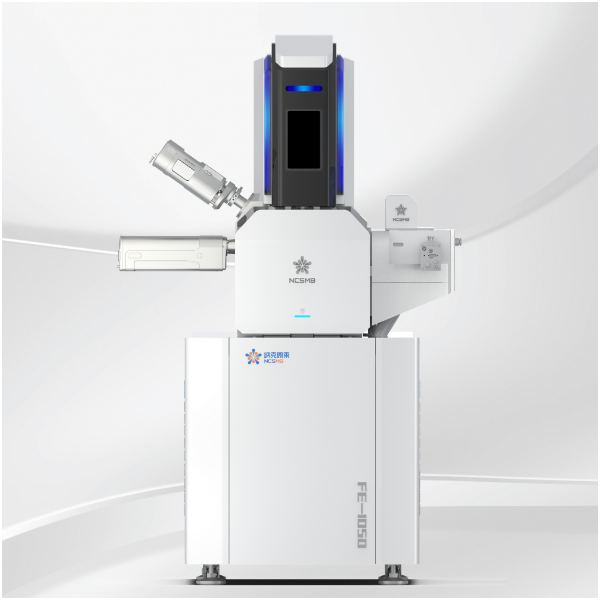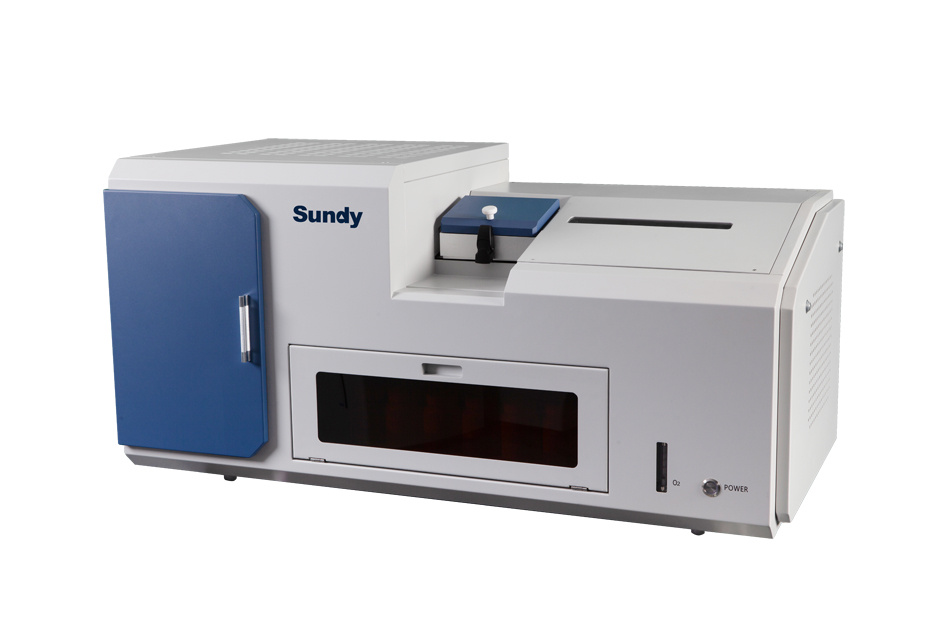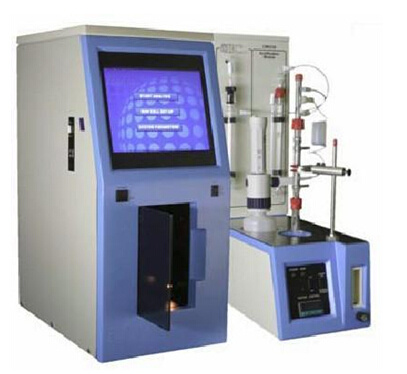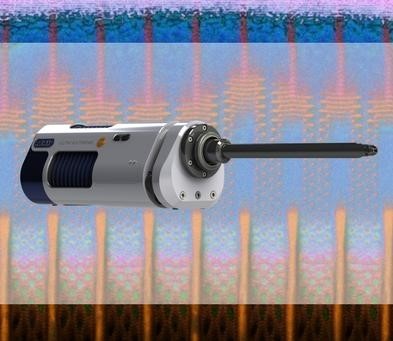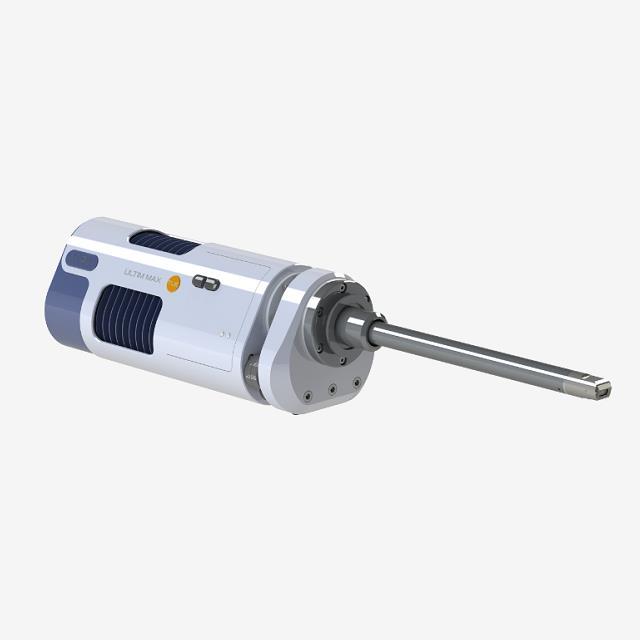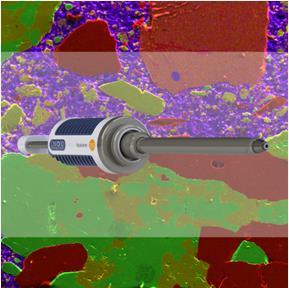方案详情
文
An important part of the research and development of thin-film solar cells is the characterisation of microstructural and
compositional properties of the functional layers. For this purpose, energy-dispersive X-ray spectrometry (EDS) and electron
backscatter diffraction (EBSD) represent techniques which exhibit spatial resolutions on the nanometer scale but can be, at
the same time, applied on large areas of several square millimeters. The application of EDS and EBSD is demonstrated on this
example of thin-film solar cells with Cu(In,Ga)Se2 absorber layers. While EDS provides elemental distributions even in layers
with a nominal thickness of 30-50 nm, EBSD gives not only information of average grain sizes, local orientations and grain
boundaries. Moreover, strain distributions within individual grains can be calculated by the evaluation of EBSD patterns recorded
on individual grains.
方案详情

Application Note EBSD and EDS in the analysis of thin-film solarcells based on Cu(In,Ga)Se, absorber layersApplication Note Introduction An important part of the research and development of thin-film solar cells is the characterisation of microstructural andcompositional properties of the functional layers. For this purpose, energy-dispersive X-ray spectrometry (EDS) and electronbackscatter diffraction (EBSD) represent techniques which exhibit spatial resolutions on the nanometer scale but can be, atthe same time, applied on large areas of several square millimeters. The application of EDS and EBSD is demonstrated on thisexample of thin-film solar cells with Cu(In,Ga)Se, absorber layers. While EDS provides elemental distributions even in layerswith a nominal thickness of 30-50 nm, EBSD gives not only information of average grain sizes, local orientations and grainboundaries. Moreover, strain distributions within individual grains can be calculated by the evaluation of EBSD patterns recordedon individual grains. Thin-film solar cells One of the open questions in research and developmentof Cu(In,Ga)Se, solar cells is why such excellentphotovoltaic performance is possible in spite of thelarge densities of grain boundaries, which are normallyconsidered as positions of enhanced recombinationof the generated charge carriers. For the study of thisissue, it is essential to determine the position of grainboundaries and to classify them according to theirsymmetries. Here, electron backscatter diffraction (EBSD)is a useful tool, which can be combined with otherelectrical and optoelectronic characterisation techniqueson identical regions of interest for correlative analyses ofextended structural defects in the thin-film solar cells. The In and Ga distributions perpendicular to thesubstrate are not constant but exhibit gradients, whichhas a considerable impact on the optical properties ofthe Cu(In,Ga)Se, layer since CulnSe, has a differentband-gap energy (1.04 eV) than CuGaSe, (1.68 eV)[].For the measurement of these gradients and generallyfor the detection of elemental distributions and presentphases in the thin-film stack, energy-dispersive X-rayspectrometry (EDS) is employed. 1Tum Fig. 1: Scanning electron micrograph of a thin-film solar cell consistingof an+-ZnO/n-CdS/p-Cu(In,Ga)Se2/Mo/glass stack, as well as its mode ofoperation. Upon illumination by sunlight, electron-hole pairs are generated,mainly in the Cu(In,Ga)Se, absorber layer, and separated when reaching thespace-charge region of the diode (not shown here). The resulting chargedensities at the ZnO and Mo contacts can be used to operate an externalload. From Ref. 2. Experimental procedure EDS elemental distribution and EBSD maps in the present work were obtained using an X-Max° 80 X-ray detector and aNordlysNano camera from Oxford Instruments on a Zeiss UltraPlus scanning electron microscope. The acceleration voltagesand beam currents applied were 15 kV and 250 pA (EDS) or 55 nA (EBSD). Data acquisition as well as evaluation was performedusing the AZtec@ software package. Evaluation of stored EBSD patterns for strain/stress analysis within individual grains wasconducted by use of the CrossCourt 3 software (BLG Productions). Fig. 2: a) Composed EDS elemental distribution maps, superimposed on a SEM image, using C-K, Zn-L, Cd-L, Ga-L, Mo-L, and Si-K signals.Extracted linescans of the Ga (b) and Cd distributions (c). The measured values (open circles) were fitted (red lines) using a FFT filter (b) and aGaussian distribution with full width at half maximum of about 110 nm (C). Results Elemental distribution maps can be aquired on cross-sectional specimens of Cu(In,Ga)Se, solar cells by means of EDS in ascanning electron microscope. By reducing the electron-beam energy to a minimum and by using only low-energy X-ray lines,the spatial resolution of the EDS signals can be improved substantially, to below 100 nm. In Fig. 2a, the elemental distributionmaps using the C-K, Zn-L, Cd-L, Ga-L, Mo-L, and Si-K signals are given superimposed on a SEM image. All functional layers inthe solar-cell stack, also the about 50 nm thin CdS layer, can be clearly identified. The extracted linescans of the Ga (Fig. 2b) andCd signals (Fig. 2c) corroborate this capability, reproducing well the spatial distributions of the elements. Complementarily to EDS, the solar-cell cross-sections are also studied by means of EBSD. Thus, the positions of grain boundaries(Fig.3a) and the local orientation distributions of individual grains (Fig. 3b) in a CulnSe, thin-film can be determined. Moreover,by recording and evaluating the EBSD patterns [4], strain distribution within individual grains can be computed (given for thestrain tensors 8.,8,,, 8 in Fig. 3c-e). A critical issue for this analysis is the determination of the reference point (actually theposition of zero strain, which does not exist in a polycrystalline thin film), which is given as black spot in the middle of thehighlighted grain in Fig. 3c-e. The average strain values were found to be about 3-5x10-4. Fig. 3: EBSD pattern-quality (a) and orientation-distribution maps (b), acquired on a cross-section of a ZnO/CdS/CulnSe2/Mo/glass stack, withthe local orientations given as false colors, see legend. Spatial distributions of the strain components8(c),8,(d), and 8, across the grainhighlighted by dashed line in (b). The sectioning function of a focused-ion beam (FIB) machinecan be combined alternatingly with EBSD map acquisitions.From the resulting data acquired on a CulnS, thin film,3D EBSD cubes were reconstructed (Fig.4). This 3D dataprovides not only structural information about individualgrains but also gives direct access on how grain boundariesprogress in depth of the layers. It is therefore possible toreproduce the 3D grain boundary network in the CulnS, thinfilm. This is very helpful when combining EBSD with electrical oroptoelectronic analysis performed in SEM using electron-beam-induced current (EBIC) or cathodoluminescence (CL)measurements, with the aim of analyzing the impacts ofgrain boundaries on the optoelectronic properties and onthe device performances of the corresponding solar cells.EBIC and CL exhibit much larger information depths thanEBSD, which often makes the interpretation of combinedEBSD/EBIC/CL data from identical specimen areas difficult,with respect to the influence of the microstructure on theEBIC and CL signals (see, e.g., Refs. 5,6,7). This obstaclecan be avoided by acquiring a 3D EBSD cube after EBIC andCL measurements. Fig. 4: Three-dimensional EBSD data cube, reconstructed from 20individual two-dimensional EBSD maps acquired in plan-view on aCulnS2 thin film (deposited on Mo/glass substrates). The distancesbetween the individual slices removed by focused ion beam (and in thepresence of XeF,) were about 100 nm. Figure taken from Ref. 8. An example of combined EBSD and EBIC analysis onthe identical position of a cross-sectional specimen of aCu(In,Ga)Se, solar cell is given in Fig. 5. The EBIC signal isenhanced in the space-charge region of the p-n junction ofthe solar cell owing to field-driven charge carrier collectionwithin this region. Such measurements at (random) grainboundaries in identical Cu(In,Ga)Se, thin films yieldedincreased and decreased EBIC signals [6, 9, 10] at differentgrain boundaries. Conclusion Structural and compositional analyses of the functionalthin-films and their internal interfaces in Cu(In,Ga)Se, solar-cell stacks can be performed at the submicrometer scale bymeans of EBSD and EDS in a scanning electron microscope.Modern instrumentation provides the means for high-speedmeasurements on large regions of interest in the 100-umscale. It is very useful to combine these analyses with furtherelectrical and optoelectronic characterisation in SEM on thesame identical specimen positions, in order to provide directaccess to structure-property relationships in semiconductordevices based on thin-film stacks. Acknowledgements We would like to thank N. Schafer and D. Abou-Ras(both Helmholtz-Zentrum Berlin fur Materialien undEnergie, Germany) for providing the EDS/EBSD analyses.The collaboration with Prof. A. Wilkinson on strainmeasurements from EBSD data is gratefully acknowledged.Special thanks are due to U. Bloeck, J. Bundesmann, B.Bunn, C. Ferber, C. Forster, C.A. Kaufmann, M. Kirsch, H.Kropf, T. Munchenberg, T. Rissom, J. Schniebs, P. Schubert-Bischoff, and Harald Stapel for solar-cell production, aswell as for specimen preparation and technical support forscanning electron microscopy. SE Ni-Al grid zno Cds Fig. 5: Secondary-electron (SE) image, EBSD pattern-quality map, aswell as EBIC image (at 10 kV and 200 pA), all acquired on the identicalposition of a cross-sectional specimen prepared from a ZnO/CdS/Cu(In,Ga)Se,/Mo/glass stack. From Ref. 2. References [1] P. Jackson, D. Hariskos, R. Wuerz, W. Wischmann, M. Powalla, to be published in phys. stat. sol. (RRL), doi: 10.1002 pssr.201409040.. [2] D. Abou-Ras, J. Kavalakkatt, M. Nichterwitz, N. Schafer, S. Harndt, A.J. Wilkinson, K. Tsyrulin, H. Schulz, F Bauer, The Journal of TheMinerals, Metals & Materials Society (JOM) 65 (2013)1222-1228. ( [3] M.I. Alonso, K . Wakita , J . Pascua l , M . Garriga, N. Yamamoto , Phys . Rev. B 63 (2001)075203-1-13. ) ( [4] A.J. Wilkinson, G. Meaden, a nd D.J. Dingley M ater. Sci. Techn. 22 (2006) 1 271-1278. ) ( [5] D. Abou-Ras, U. Jahn, J. Klaer, M. Nichterwitz, T . Unold, H .-W. Schock, J . App l. P hys. 107 (2010)014311-1-8. ) [6] J. Kavalakkatt, D. Abou-Ras, J. Haarstrich, C. Ronning, M. Nichterwitz, R. Caballero, T. Rissom, T. Unold, R. Scheer, H.W. Schock, "Electron-beam-induced current at absorber back surfaces of Cu(In,Ga)Se2 thin-film solar cells", J. Appl. Phys. 115 (2014)014504-1-10. [7] M. Muller, D. Abou-Ras, T. Rissom, E. Bertram, J. Christen, J. Appl. Phys. 115 (2014)023514-1-6. [8] D. Abou-Ras, B. Marsen, T. Rissom, F Frost, H. Schulz, F Bauer, V. Efimova, V. Hoffmann, A. Eicke, Enhancements in specimen preparation ofCu(In,Ga)(S,Se)2 thin films, Micron 43 (2012)470-474. [9] M. Nichterwitz, D. Abou-Ras, K. Sakurai, J. Bundesmann, T.Unold, R. Scheer, H.W. Schock,"Influence of grain boundaries on currentcollection in Cu(In,Ga)Se2 thin-film solar cells", Thin Solid Films 517 (2009)2554-2557. An important part of the research and development of thin-film solar cells is the characterisation of microstructural andcompositional properties of the functional layers. For this purpose, energy-dispersive X-ray spectrometry (EDS) and electronbackscatter diffraction (EBSD) represent techniques which exhibit spatial resolutions on the nanometer scale but can be, atthe same time, applied on large areas of several square millimeters. The application of EDS and EBSD is demonstrated on thisexample of thin-film solar cells with Cu(In,Ga)Se2 absorber layers. While EDS provides elemental distributions even in layerswith a nominal thickness of 30-50 nm, EBSD gives not only information of average grain sizes, local orientations and grainboundaries. Moreover, strain distributions within individual grains can be calculated by the evaluation of EBSD patterns recordedon individual grains.
确定
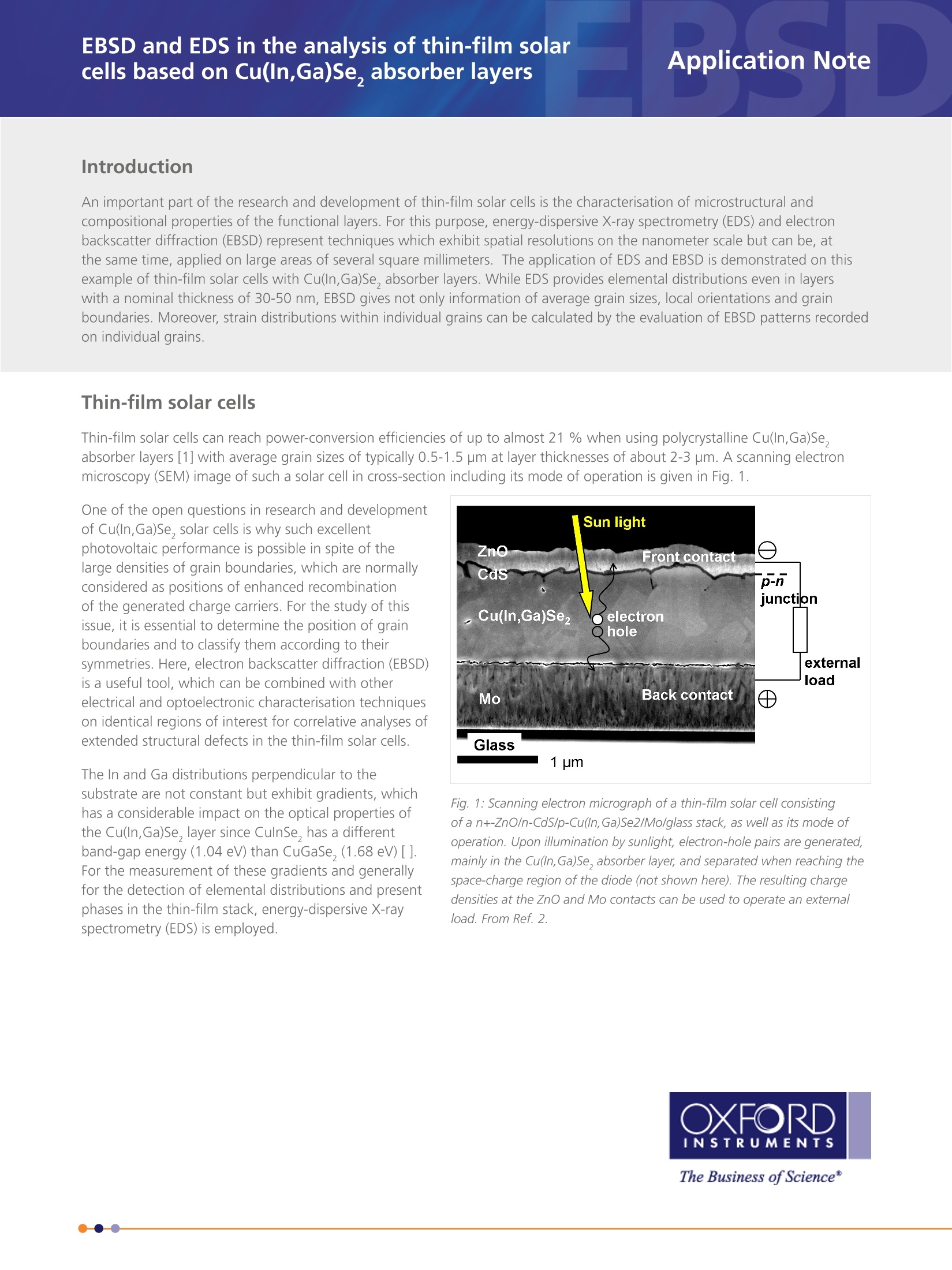
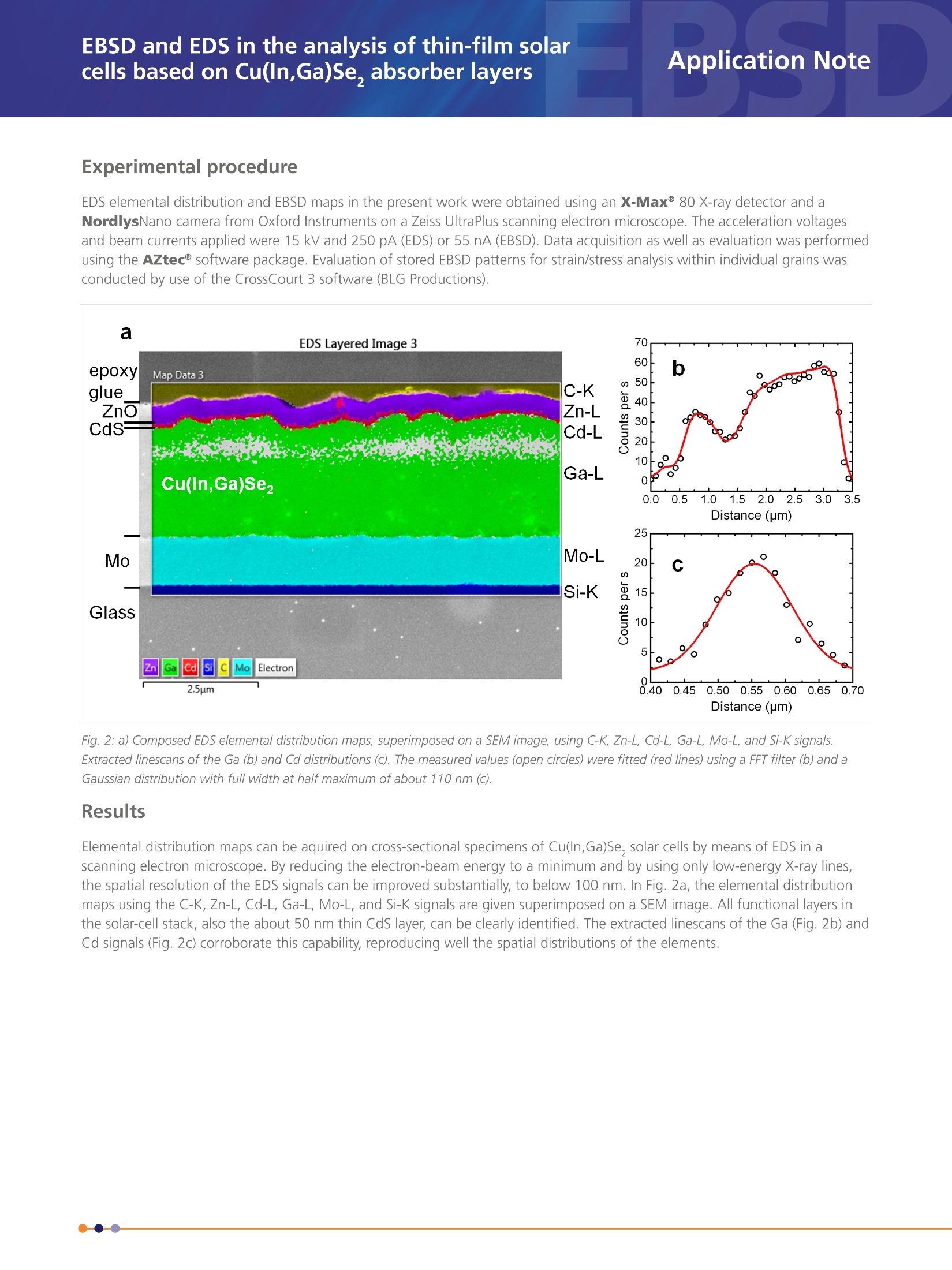
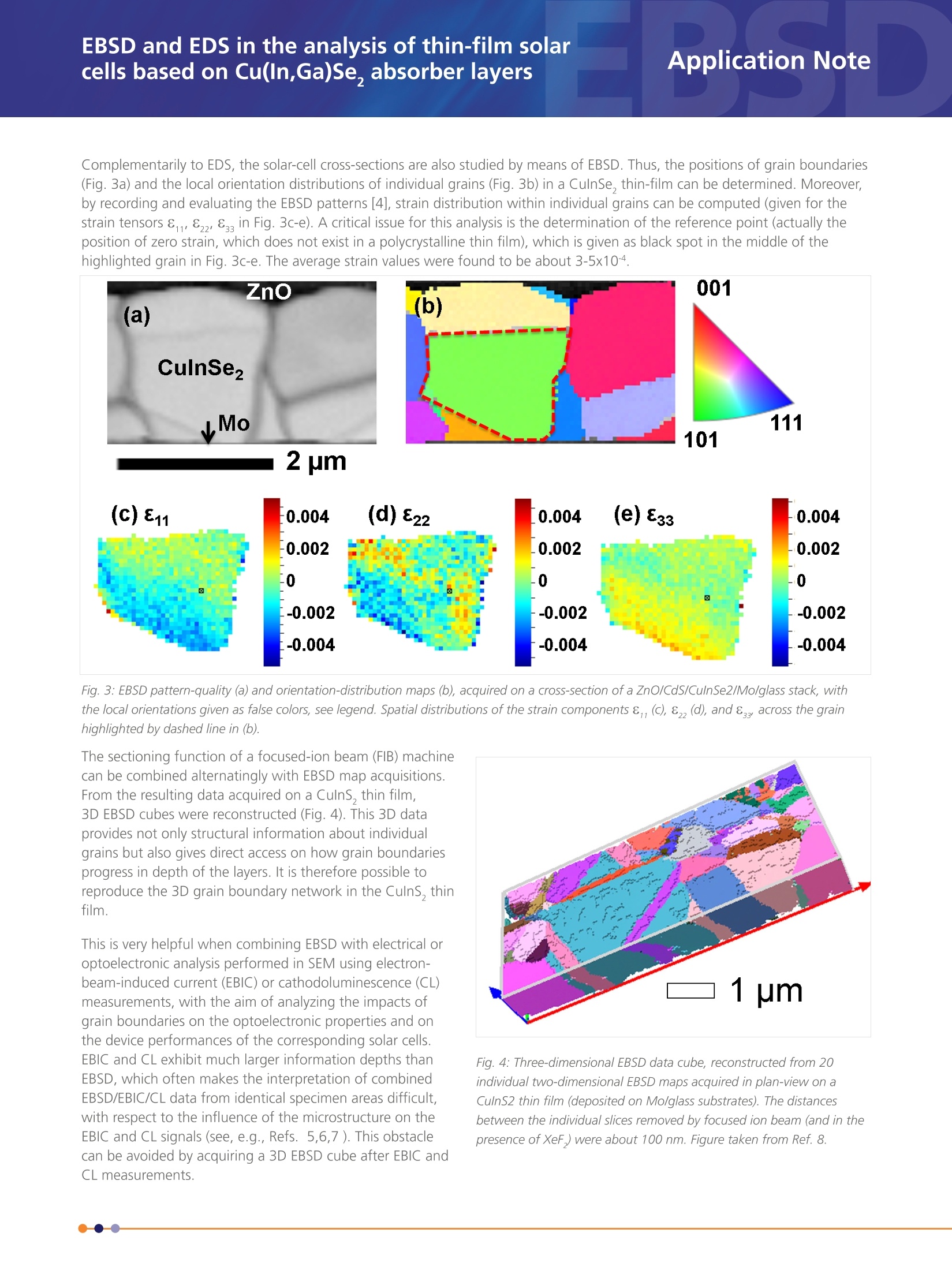

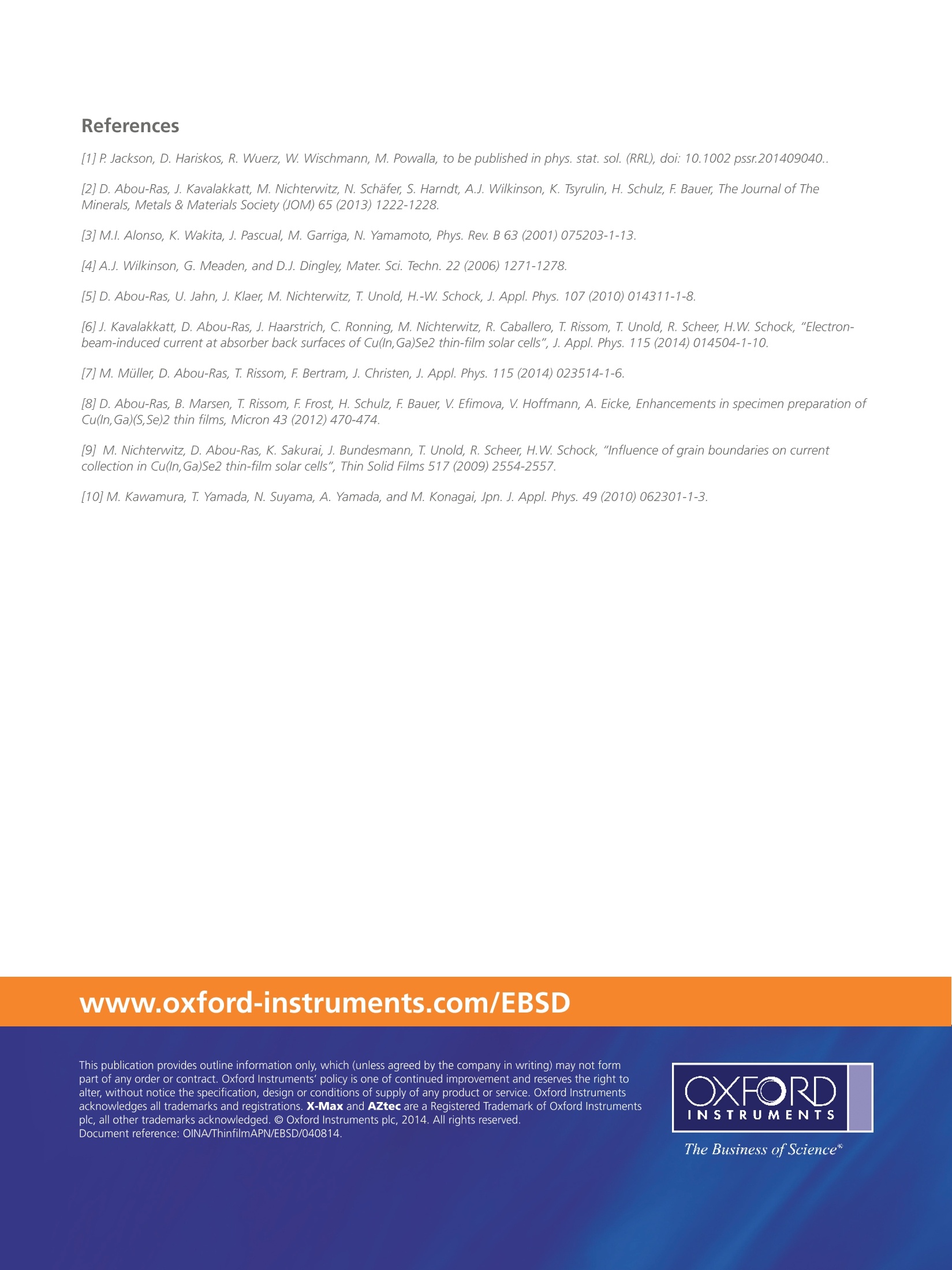
还剩3页未读,是否继续阅读?
牛津仪器科技(上海)有限公司为您提供《太阳能电池中微观结构和成分属性检测方案(EBSD系统)》,该方案主要用于太阳能电池中微观结构和成分属性检测,参考标准--,《太阳能电池中微观结构和成分属性检测方案(EBSD系统)》用到的仪器有电镜专用微区结构分析---牛津仪器灵敏性C-Nano EBSD、电镜专用自动清洁度分析系统---牛津仪器AZtecFeature、牛津仪器Azteclive能谱实时元素成像系统、牛津仪器Ultim Extreme无窗超级能谱
推荐专场
电子背散射衍射系统(EBSD)
更多
相关方案
更多

